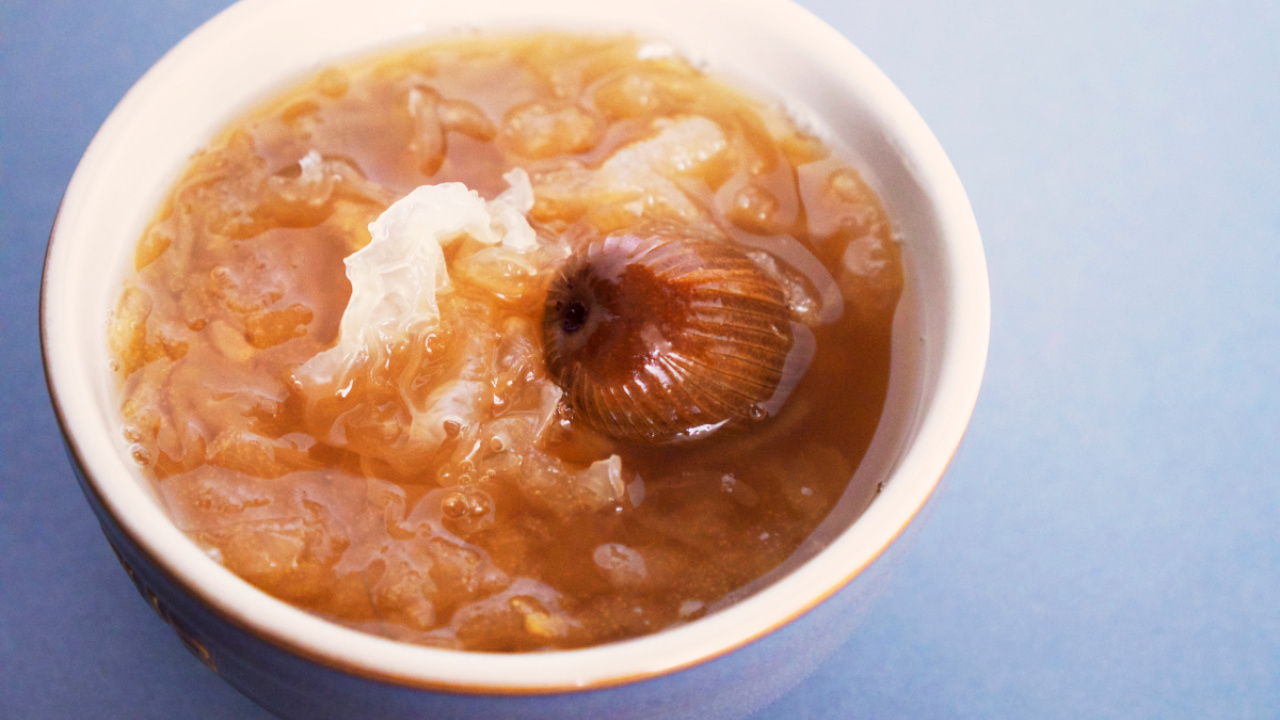Snow fungus is often used in Asian soups and drinks due to its health properties. Also known as white fungus, it is often cooked together with a sweet fruit and made into desserts. The nutrients from the snow fungus are said to be equivalent to that of the expensive bird's nest.
Just like bird's nest, snow fungus has anti-aging properties that are able to help in reducing collagen losses. One can definitely call it the poor man’s bird's nest because snow fungus is so much cheaper yet nutritious. Instead of using apple, I am using the Korean pear or also known as Nashi pear to prepare this dessert. Korean pears have plenty of health benefits too. Hence, this snow fungus soup is a definite health booster as it detoxifies, dissolves mucus, treats constipation, heals sore throat and relieves cough besides being a thirst quencher. In fact, this soup also helps to boost the immune system, according to traditional Chinese medicine practitioners.
Why this recipe works?
Instead of adding the pear in huge chunks, this recipes requires you to shred the pear. This makes a huge difference because the texture is comparable to the famous beauty elixir, the bird's nest. The doubling boiling process is subtle and it doesn’t disintegrate the ingredients. The shredded pear and snow fungus is so soft and it will almost melt as it touches your tongue.
Important tips when using snow fungus
Before using the snow fungus, hydrate it in water until it softens. Remove the hard parts of the snow fungus as only the soft parts are used to make the dessert. Rinse it thoroughly to get rid of any impurities. The snow fungus should be cut into slices and the Korean pear, shredded. Once cooked, both ingredients combined well, thus making the dessert delightful to consume.
Asian pear or Chinese pear?
The Asian pear or Nashi pear belongs to the rose family. Thus, it is no surprise to smell the fragrant sweetness released by the pear after double boiling the soup for 4 hours. Although it takes quite long for this dessert to be ready but it is surely worth the effort. Moreover, double-boiling for long hours is a tradition that goes way back. It helps to lock in the nutrients as it gently cooks the soup.
If you are unable to find Nashi pear, use Chinese pear instead. It has a light yellow skin and can be found at your local grocer. I had tried using both types of pears in preparing this dessert. However, I noticed that the final result is different as the Chinese pear is not as sweet and juicy as the Nashi pear. That being the case, just sweeten the soup with another honey date or add more rock sugar.
Make your own double boiler
Traditionally, most Chinese households have a double boiler. Unfortunately, I do not possess one, so I had to be creative. I managed by placing the soup in a ceramic bowl and covering it with a plate before double boiling it in a cast iron pot. This works just as well as a double boiler. I had been using this method for years now and has never encountered any problems. So, try this method if you do not own a double boiler.
Using the instant pot
Boil all ingredients in the instant pot for about 30 minutes at high heat. Ensure that there is enough water to avoid burning.
Using the pressure cooker
Add all ingredients including shredded pear into the pressure cooker and press soup. That's it!
Boiling over direct heat
Boiling the soup directly is also possible but the heat is much harsher compared to double boiling. A lot of nutrients is perceived to be lost if it is cooked directly over the stove. Admittedly, I sometimes do so as it does not take long for the ingredients to soften. Therefore, I guess it depends on the time and tools you have in hand. Either way, you will still be rewarded with a great and nutritious thirst quencher.

